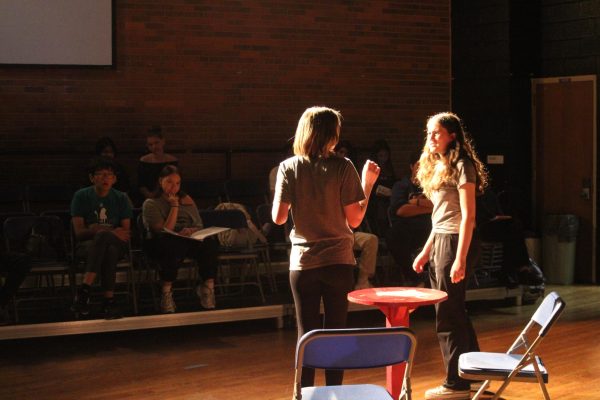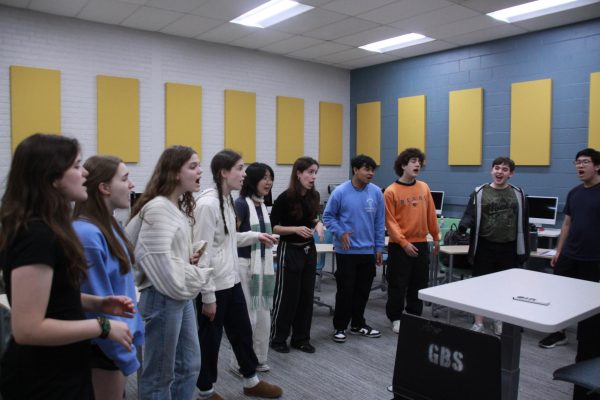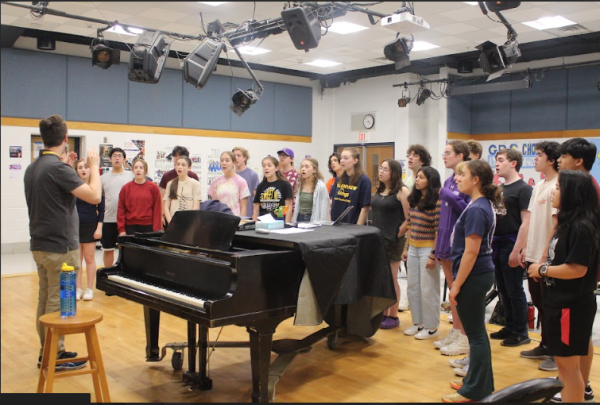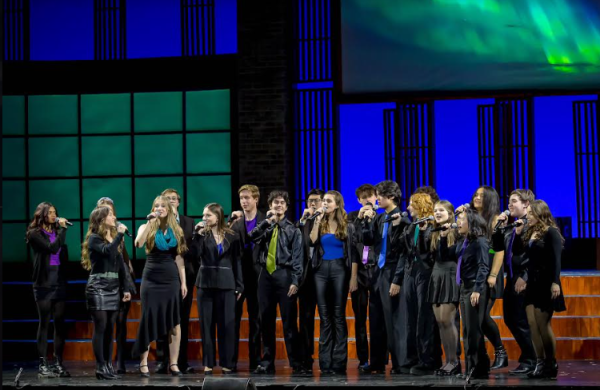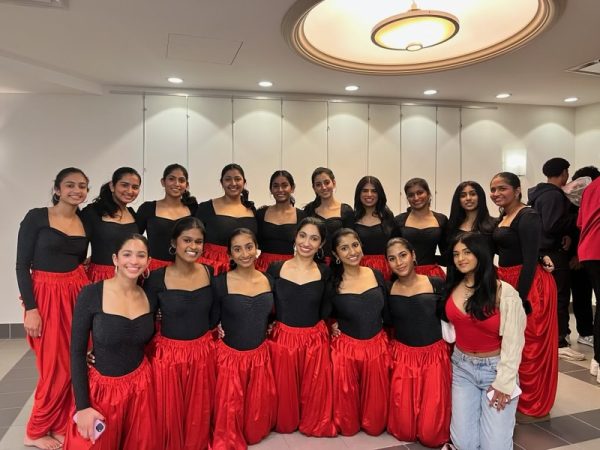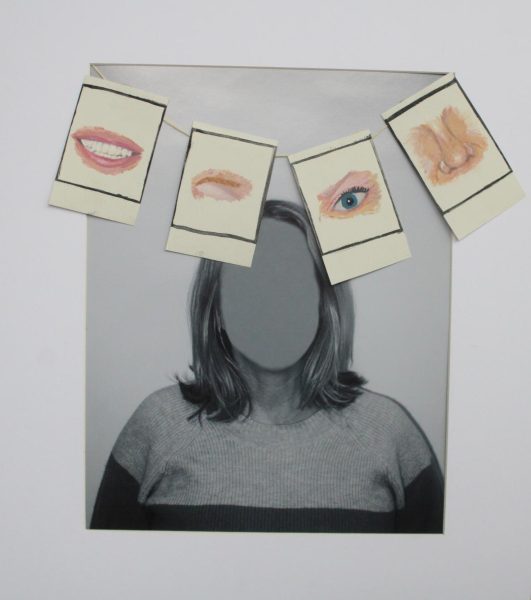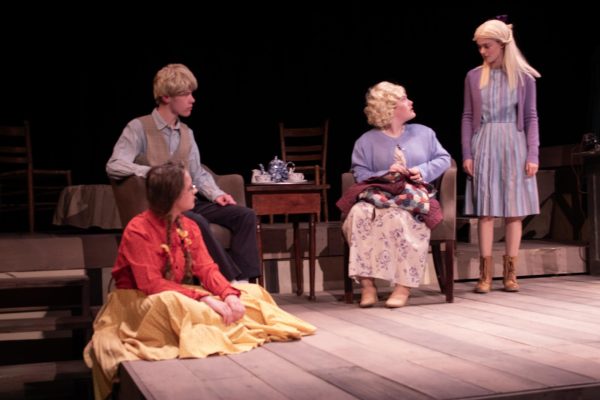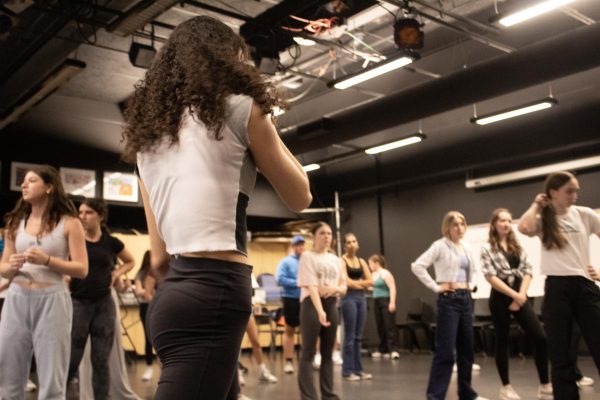South’s crew: Stage crew constructs production sets, supports performances
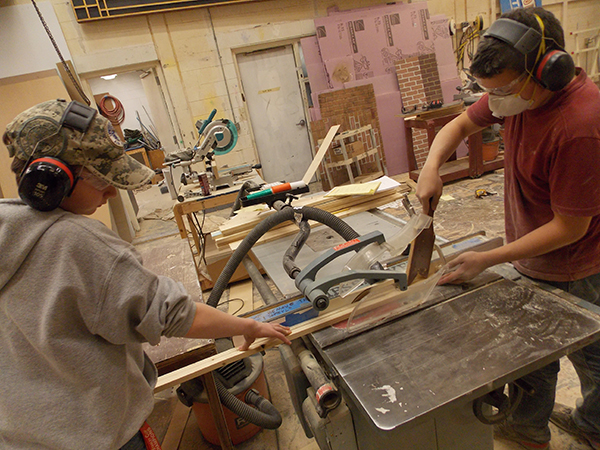
STARTING FROM SCRATCH: Sawing wood for the Variety Show, freshman Bryce Brennan and junior Justin Kalish prepare smaller pieces of wood to assemble the set. Every set design is created by Rich Winship, stage crew director.
February 5, 2016
Several groups contribute to Glenbrook South productions, and one of those groups is stage crew. According to Rich Winship, stage crew director, stage crew is responsible for the sets, lights, sound and the other technical aspects of a production.
According to Winship, stage crew works 20 to 24 hours during the construction process of a production. During the week or two before a production and and the week of, they work about seven hours a day.
“[Stage crew has] to be committed to the amount of time it takes to get everything done,” Winship said. “They have to be focused, they have to be organized, [and] they have to be able to work together as a team with [both] each other and also the performers.”
Winship believes that one important benefit of being on stage crew is all of the skills that members learn along the way. According to Winship, stage crew members gain several important skills, such as working together as a team, building things using tools, the ability to multi-task and also respect, camaraderie and discipline. Senior Alan Gelman, stage crew member, says that he believes stage crew will play a valuable role in his future.
“I’m planning on going into engineering when I grow up,” Gelman said. “Stage crew is probably going to help me with working with teams of people, building things, understanding blueprints, reading light plots [and] things like that.”
Junior Jordan Zelvin has performed in several of the productions that have taken place at South in the past. According to Zelvin, the stage crew is the glue that holds every show together.
“In past shows, I’ve had to work very closely with stage crew,” Zelvin said. “If it’s a show like Charlotte’s Web, where there are people suspended from the ceiling and stage crew is controlling how you move; you are completely in their hands. You have to trust them entirely, and they are amazing at their job.”
Winship believes that the Variety Show is the most challenging and intense production for stage crew. According to Winship, he designs the sets and lights for every V-Show. Winship explains that the theme of every V-Show gives him ideas for the design of the set.
“I get inspired by concepts related to the theme,” Winship said. “Then, it’s just a matter of making that concept fit within the parameters of a V-Show set [and] what’s needed for a Variety Show set, which is lots of different levels, lots of open space for performers to perform and the ability to maybe make it a more intimate space with lighting.”
After Winship designs the sets and the lights, the plans are implemented by stage crew members. According to junior Alex Roth, stage crew member, he says that constructing the set for V-Show is the most satisfying part of the process.
“What makes me proud is all the work we put into V-Show,” Roth said. “I get to see the set from when the stage is just empty, and we start out with one sheet of plywood [and transform it into] what it will be on opening day with all the colors, painting and all the wood put together. It’s absolutely amazing.”
Stage crew also has several tasks during the show itself. According to Winship, in between every act, the stage crew members are backstage preparing for the next act or on stage in the dark setting up. He says that stage crew only has 15 seconds to accomplish the tasks for the next act.
“It takes a lot of practice and a lot of leadership by the heads of each crew to make sure that everybody knows where they are going to go, what they are going to do and what they are going to do when they are done,” Winship said. “It is very highly choreographed.”
According to Winship, during a V-Show, things can get stressful due to the fact that stage crew members have such a limited time period between acts. Gelman expressed that he at times does feel stressed during V-Shows.
“Right before I have to make a shift, I’m really nervous and sitting in the chair sort of shaking,” Gelman said. “The second [the show] starts, I get on stage and I start moving things around and I feel fine. Everything feels perfectly natural.”
Winship explains that if stage crew does their job well during a show, the audience should not even perceive that they are there. He says that even though stage crew does not go on stage and receive applause after a show, he feels that the work of stage crew definitely does not go unrecognized.
“We get recognized quite a bit by our colleagues and our peers, so that’s plenty for us,” Winship said. “People who are involved in shows know what it takes and know what we do, so we are not looking for going on stage and getting applause. The applause we hear on stage, we know is for us even though the audience may not know it’s for us because [shows] couldn’t happen without us.”





